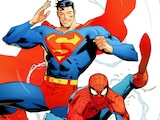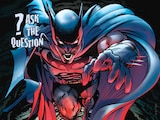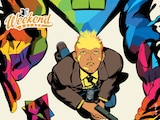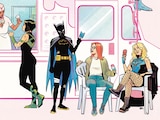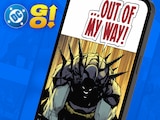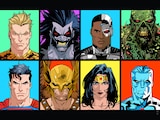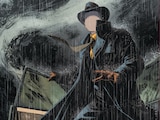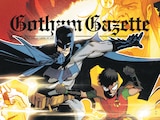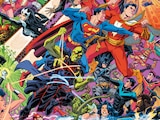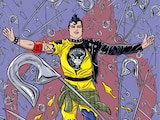It’s the season of screams and there are plenty of characters in the DC Universe who can deliver their fair share of them. What we consider to be “scary” is an intensely personal thing, and the list I’ve put together here may differ from what you might come up with. But that’s exactly what I find so interesting about fear to begin with. While humans tend to have the same thematic fears, we all have our own individual anxieties that horror brings to light.
With that in mind, I’ve also put together this list to account for characters who aren’t just scary because of their character designs alone. Instead of just looking creepy, these characters needed to also represent something upsetting on multiple levels. So with that said, let me show you my picks for the most terrifying characters in the DCU. Pray you never run into them.


Professor Pyg
I’m just going to say upfront that we’ll be hanging out in Gotham for most of this list but is that really all that surprising? Something really needs to be done about that city. There are just too many scary guys calling it home. Case in point: Professor Pyg.
Professor Pyg is obsessed with perfection, so much so that he’s willing to kidnap people and surgically attach faces—and even animal heads—onto their bodies. He also devised a drug that turns people into his mindless followers. There’s a perversity to Pyg’s behavior that skyrocketed him to the top of Gotham’s worst when he debuted in Grant Morrison and Frank Quitely’s Batman and Robin #1 back in 2009. But it was wise ol’ Jim Gordon in Batman and Robin #3 who summed our feelings on Professor Pyg perfectly: “I hate it here.”


The Men from N.O.W.H.E.R.E.
At one point in time, the members of the Doom Patrol could all be considered horrifying because of their eccentricities. This is an element that writer Grant Morrison played with in their seminal run on the title. In issues #43 and #44, Morrison was joined by Richard Case and Mark McKenna to bring to life a disturbing place beneath the Pentagon in Washington D.C. known as the Ant Farm. The Ant Farm is led by a cheery but jingoistic Major Honey, who uses the robotic-looking Men from N.O.W.H.E.R.E. in order to “exterminate all eccentricity and irrationality” in the real world. This includes the members of the Doom Patrol themselves. According to Major Honey’s wishes, the Men from N.O.W.H.E.R.E. all act in a predetermined manner, cutting out “rebellion” in the name of “reliability.”
Now, I don’t think I need to spell out all the reasons why the purpose of the Ant Farm is unsettling. But the character designs of the Men from N.O.W.H.E.R.E are uncanny and are worth unpacking. Despite being robotic in nature (hence going against the “Men” part of their name), their heads resemble animal skulls. It’s a horrid merging of both the mechanical and the organic and natural that continues to haunt me.


Failsafe
As we all know, Batman loves his contingency plans. And so, because he’s Batman, he builds a robot called Failsafe to stop him and his Justice League buddies in the event that he betrays his number one rule—to never take a life. However, after the Penguin graciously fakes his own death at the hands of Batman, Failsafe activates.
I’ll admit that I didn’t really click with robot horror stories until I read the “Failsafe” arc of Chip Zdarsky and Jorge Jiménez’s Batman. It’s not that I didn’t enjoy them, I just wasn’t on the same page with why people were so afraid of robots. Zdarsky and Jiménez’s story, however, changed all of that for me.
Unlike so many of Batman’s foes, Failsafe can’t be reasoned with. There’s no emotional, human core to appeal to. It doesn’t even have a face. One moment that sent chills up my spine was in Batman #127 when Failsafe drags its claws across a painting of Thomas and Martha Wayne, defacing them. The robot also makes a “chk” noise every time it speaks, reminding us both of its mechanical nature and its ability to function independently. Jiménez’s images of Failsafe walking around Batman’s house makes us feel like we’re trapped in there with the robot, hiding from it while we watch it encroach upon our hero’s home. I may not have had a fear of robots before reading “Failsafe,” but I certainly did once I finished it.


Upside-Down Man
Every so often, you come across a character so utterly upsetting to look at that you stop and wonder where it came from, only to realize that you don’t actually want to know the answer. That’s the Upside-Down Man, perhaps the biggest foe of the Justice League Dark.
The Justice League Dark is already one of the most powerful teams ever assembled in the DC Universe. They’ve got Zatanna, Wonder Woman, Swamp Thing, Doctor Fate, John Constantine, Detective Chimp (regular chimpanzees are about 1.5 times stronger than a buff human, by the way) and Man-Bat. But the Upside-Down Man is magic incarnate. He’s capable of reality warping, and his magic is powered by the Source—the same stuff that makes the New Gods so strong.
Anything that’s powered by the Source that also has an upside-down face and no eyes is something I never need to see in real life. If I saw an Upside-Down Man cosplayer, I would probably walk in the opposite direction.


James Gordon Jr.
We all trust Commissioner Gordon. Even someone as paranoid and traumatized as Batman trusts Jim. But Gordon’s son, James Gordon Jr., is profoundly unsettling because of the way that he twists our trusting relationship with his family. As detailed in the superb Batman: The Black Mirror by Scott Snyder, Jock and Francesco Francavilla, James Gordon Jr. returns to Gotham after years of being estranged from the rest of his family, resulting in one of the most frightening Batman stories ever told.
There’s always been something off about James Jr., ever since he was a child. He would perform vivisections on animals, dress up as the Joker for Halloween, and likely played a role in the disappearance of Barbara Gordon’s childhood friend, Bess. That’s because unlike the rest of the Gordon family, James Jr. is a psychopath with a violent streak. There’s no reasonable explanation for his disturbing behavior, but then again, there’s no reasonable explanation for why someone like Jim Gordon and his daughter Barbara continue to be such good people in a place as rotten as Gotham City. What’s ultimately so terrifying about James Jr. is that he reveals how we take ideas of “home,” “safety” and “family” for granted. We feel safe with the Gordon family because we’ve spent so much time with them over the years in Batman stories. But familiarity does not equal a sense of safety, as James Jr. is so eager to reveal.
Jules Chin Greene writes about comics, TV, games and film for DC.com, and his work can also be found at Nerdist, Popverse and Multiverse of Color. You can follow him on Twitter and Bluesky at @JulesChinGreene.
NOTE: The views and opinions expressed in this feature are solely those of Jules Chin Greene and do not necessarily reflect those of DC or Warner Bros. Discovery, nor should they be read as confirmation or denial of future DC plans.



